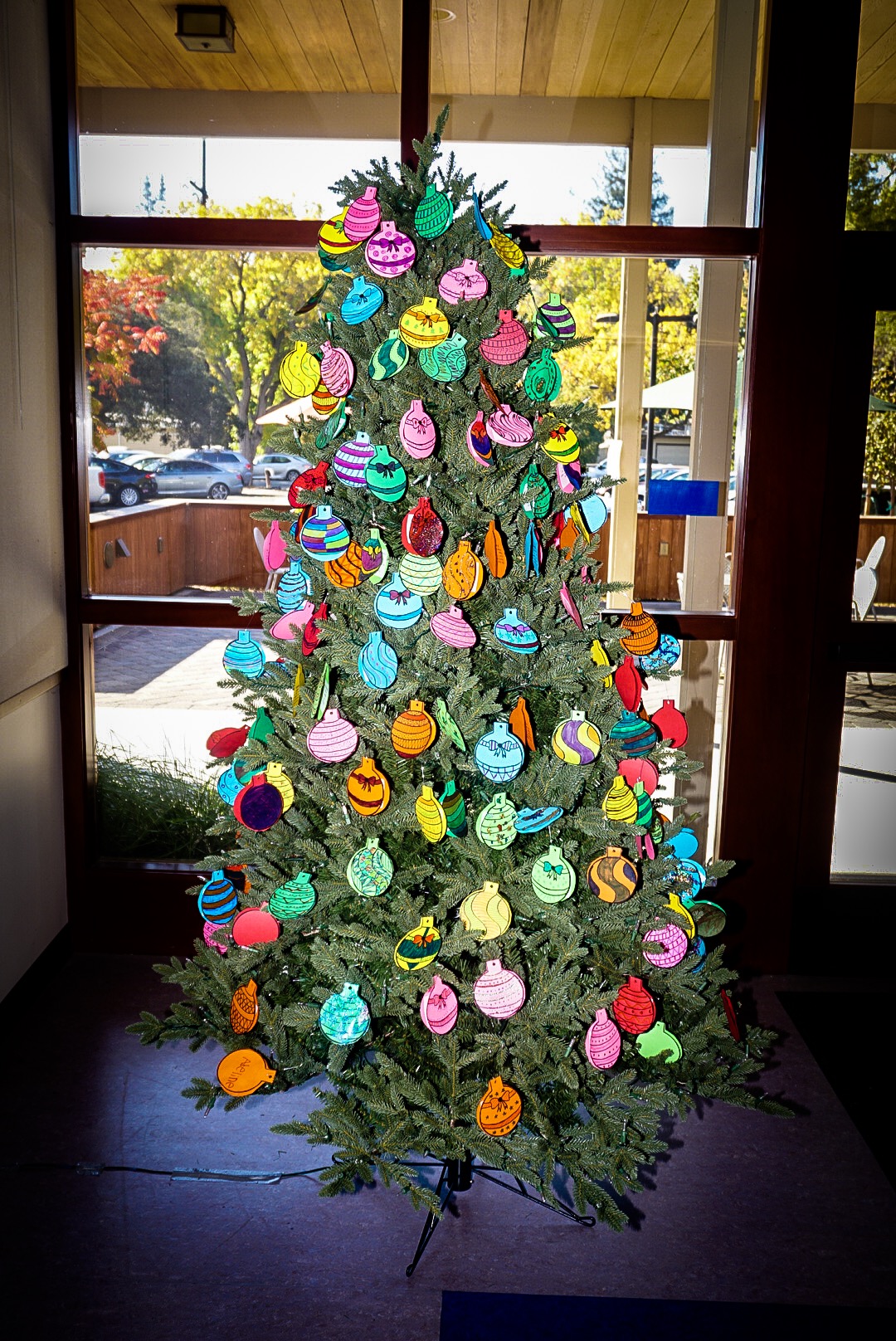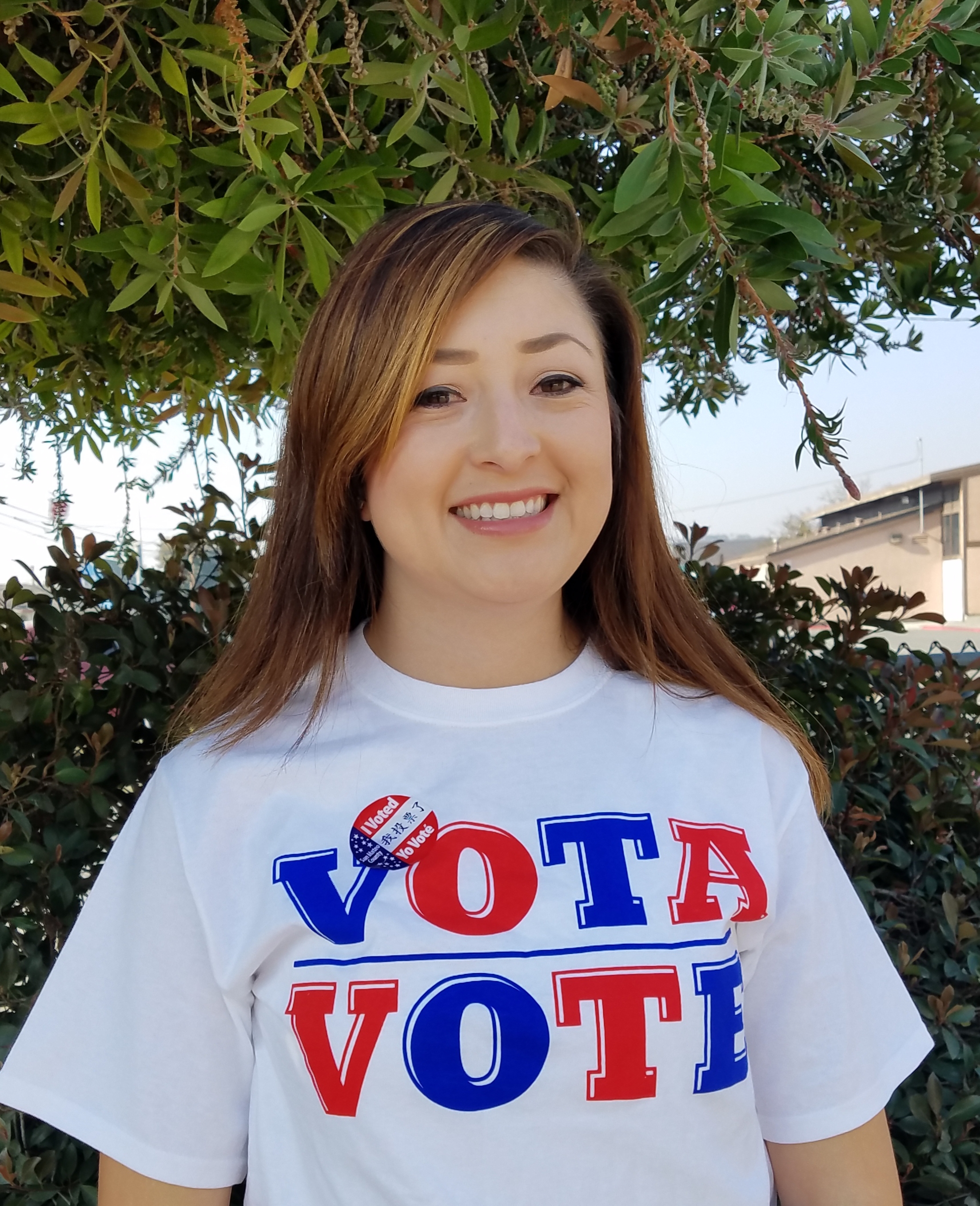
It’s a special time of year at First Congregational Church in Palo Alto. With Christmas in the air, an unusual holiday tree has been erected in the church’s common room, festooned with brightly colored paper ornaments. Each ornament contains a Christmas wish for a gift that will make a big difference to a local family this holiday season.
Exactly 210 wishes adorn the tree this year, and 30 of them are from Puente’s community of participants. Puente is relying on its network of donors to grant the wishes of hundreds of children and adults throughout Pescadero and the South Coast during the holidays.
Many people are familiar with author Shel Silverstein’s iconic children’s book, “The Giving Tree,” published in 1964. First Congregational has had its own Giving Tree for at least 25 years, says Marilyn Putney, who took over as the holiday event’s organizer several years ago. It’s a special tradition that she looks forward to all year. It takes a lot of planning and organization to collect all the requests and turn them into ornaments, and then ensure that every gift is purchased by a congregant.
“At the church, when I got on the Outreach Board, it opened my eyes to the different nonprofits in the area,” says Putney. “You just know that people need help and they don’t always have the means to do it themselves. Anyone who has time to look outside yourself, shine your light and help others, should do it.”
Puente is one of seven local nonprofits that benefit from the generosity of First Congregational each year at holiday time. Congregants decide how many wishes they want to grant: some select up to five ornaments from the Giving Tree, and go shopping for whatever is listed there.
Each gift request to First Congregational is very specific. In Puente’s case, this year they include items like baby clothing, some toys, razor kits for farm workers, and several Target gift cards. They will end up in the hands of everyone from newborns to adults.
Putney, a mother of two who lives in Palo Alto, first learned about Puente about seven years ago when the nonprofit forged a connection with a youth minister in the church.
“Puente is so important for people who get our food to the table. They work really hard,” she says.
Puente has enjoyed a long relationship with faith-based groups for years thanks to outreach efforts to more than ten congregations throughout California.
Volunteerism and giving have been an important part of Putney’s life ever since she started volunteering in her children’s schools when they were little. Since then, her work with the Outreach Board of the church has brought her into contact with nonprofits that serve homeless people, formerly incarcerated individuals, and others. In addition to the Giving Tree, she helps organize a regular volunteer effort at a hot meal program run by a nearby church, All Saints Episcopal in Palo Alto.
Putney has been a member of her church since she was a child – she would accompany her parents to Worship Service. So when someone from Puente called her up two years ago and asked if they could add some extra items to the Giving Tree – some little black shoes for local girls– she was moved by the request.
Puente was already over its item limit for the Giving Tree, but Putney never mentioned that. Instead, she personally went and shopped for the shoes, and also some wallets that a group of Puente teenagers had requested.
“Those girls deserve to have nice shoes. And I just felt like, we can afford it. It was kind of fun to go out and buy all of these things,” she says.
Putney also enjoys driving to Puente to drop off all the gifts from her congregation – a December tradition. “It’s fun to think, well, someone is really going to like this,” she adds.
Tomorrow is Giving Tuesday. Here on the South Coast, 90 South Coast families and 185 children rely on our donors to provide gift cards for food for families and gifts for children. And 140 farm workers need warm jackets, blankets and sleeping bags, and other essentials.
Puente needs your help to reach its goal of $18,500 to buy these essentials for working families. You can select from the Target gift registry for farm workers by clicking here, or make a gift to Puente that will buy a holiday gift card for families by clicking here.
Un árbol navideño especial
Es una época especial del año en la Primera Iglesia Congregacional de Palo Alto. Con la Navidad por llegar, se ha erigido un árbol navideño poco usual en la sala común de la iglesia, decorado con adornos de papel de colores brillantes. Cada adorno contiene un deseo de un regalo navideño que tendrá un gran impacto en una familia local en esta época de festividades.
Exactamente 210 deseos adornan el árbol este año, y 30 de ellos son de la comunidad de participantes de Puente. Puente confía en su red de donantes para conceder los deseos de cientos de niños y adultos de Pescadero y la Costa Sur durante las festividades de la temporada.
Mucha gente está familiarizada con el icónico libro infantil del autor Shel Silverstein, “El Árbol Generoso”, publicado en 1964. La Primera Iglesia Congregacional ha tenido su propio Árbol Generoso durante al menos 25 años, dice Marilyn Putney, quien asumió el cargo de organizadora del evento festivo hace varios años. Es una tradición especial que ella anhela todo el año. Se necesita mucha planificación y organización para recopilar todas las solicitudes y convertirlas en adornos, y luego asegurarse de que cada regalo sea comprado por un congregante.
“Cuando ingresé en la Junta de Alcance de la Iglesia, aprendí mucho sobre las diferentes organizaciones sin fines de lucro del área”, dice Putney. “Solo sabes que la gente necesita ayuda y no siempre tienen los medios para hacerlo ellos mismos. Cualquiera que tenga tiempo para mirar fuera de sí y ayudar a otros, debería hacerlo “.
Puente es una de las siete organizaciones no lucrativas locales que se benefician de la generosidad de la Primera Congregación de Palo Alto cada año durante las celebraciones de invierno. Los congregantes deciden cuántos deseos desean conceder: algunos seleccionan hasta cinco adornos del Árbol Generoso y van de compras por aquellos que aparece en su lista.
Cada solicitud de obsequio a la Primera Congregación es muy específica. En el caso de Puente, este año incluyen artículos como ropa para bebés, algunos juguetes, paquetes de rastrillos para trabajadores agrícolas y varias tarjetas de regalo de Target. Estos regalos llegarán a las manos de todos los solicitantes, desde recién nacidos hasta adultos.
Putney, madre de dos hijos, que vive en Palo Alto, supo de Puente hace aproximadamente siete años, cuando la organización sin fines de lucro forjó una conexión con un ministro de jóvenes en la iglesia.
“Puente es muy importante para las personas que llevan comida a nuestra mesa. Trabajan muy duro ”, dice ella.
Puente ha disfrutado de una larga relación con grupos religiosos durante años gracias a los esfuerzos de alcance a más de diez congregaciones en toda California.
El voluntariado y las donaciones han sido una parte importante de la vida de Putney desde que comenzó a ser voluntaria en las escuelas de sus hijos cuando eran pequeños. Desde entonces, su trabajo con la Junta de Alcance de la iglesia la ha puesto en contacto con organizaciones sin fines de lucro que sirven a personas sin hogar, personas anteriormente encarceladas y otros. Además del Árbol Generoso, ella ayuda a organizar un esfuerzo voluntario regular en un programa de comida administrado por una iglesia cercana, Todos los Santos Episcopales en Palo Alto.
Putney ha sido miembra de su iglesia desde que era una niña – desde que acompañaba a sus padres al Servicio de Adoración. Cuando alguien de Puente la llamó hace dos años y le preguntó si la congregación podía agregar algunos artículos adicionales al Árbol Generoso – unos zapatos negros para las chicas de la localidad – ella se sintió conmovida.
Puente ya había superado el límite de ofrendas y adornos para el Árbol Generoso, pero Putney nunca lo mencionó. En su lugar, ella personalmente fue a comprar los zapatos, y también algunas carteras que un grupo de adolescentes de Puente había solicitado.
“Esas chicas merecen tener buenos zapatos. Y me apetecía, podíamos costearlo. Fue divertido salir y comprar todas estas cosas “, dice ella.
Putney también disfruta conduciendo hasta Puente para dejar todos los regalos de su congregación, una tradición de diciembre. “Es divertido pensar, a alguien realmente le va a gustar esto”, agrega.
Mañana es Un Dia Para Dar. Aquí, en la Costa Sur, 90 familias y 185 niños confían en nuestros donantes para proporcionarles tarjetas de regalo para alimentos y regalos. Y 140 trabajadores agrícolas necesitan abrigos, cobijas, sacos de dormir y otros artículos esenciales.
Puente necesita su ayuda para alcanzar su meta de $18,500 para comprar estos artículos esenciales para las familias trabajadoras. Puede seleccionar el registro de regalos de Target para trabajadores agrícolas haciendo clic aquí, o haga una donación a Puente para comprar tarjetas de regalo para familias haciendo clic aquí.






